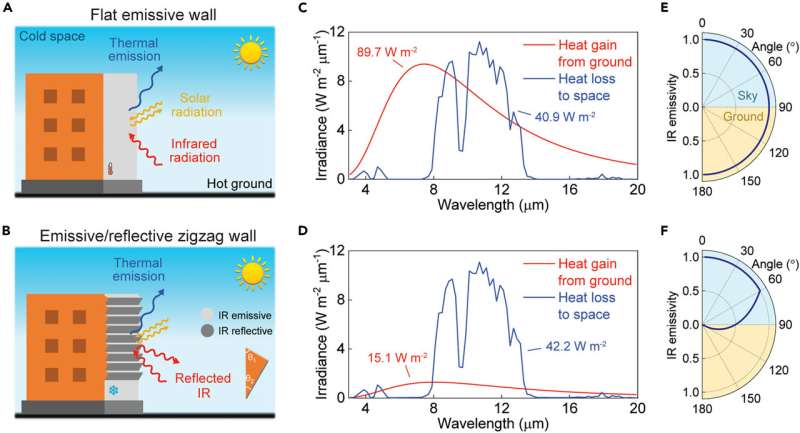August 12, 2024 report
This article has been reviewed according to Science X's editorial process and policies. Editors have highlighted the following attributes while ensuring the content's credibility:
fact-checked
trusted source
proofread
Using corrugated wall coverings to passively cool buildings

A team of applied physicists at Columbia University, working with a colleague from Henry M. Gunn High School, and another from the University of California, Los Angeles, has found that using corrugated siding on outdoor building walls can passively reduce wall temperatures.
In their paper published in the journal Nexus, the group describes how they added corrugated siding to a small test building and found that doing so lowered the wall temperatures.
Prior research has shown that covering the tops of buildings with radiative cooling materials can reduce the amount of heat that makes its way inside by up to 20%. This is because they are made in such a way as to reflect sunlight and radiate heat into outer space.
Such materials have not proved as useful when applied to the sides of buildings, however, due to the angles involved and because of heat that is reflected from the ground.
In this new effort, the research team has overcome the angle problem by using corrugated materials. Corrugated materials are those that have a zig-zag pattern when viewed from the side—such a design is commonly used between flat pieces of cardboard to make the structure stronger.
The research team noted that the walls of buildings absorb heat, which is great during the winter, but problematic during the summer. They also noted that heat can come from both the sun and from the building's surroundings. City buildings, for example, are typically surrounded by cement, which absorbs heat from the sun and then radiates it into the air, making the buildings hotter.
To account for both sources, the researchers applied corrugated material to the side of a small building model. They then painted the facets with two different materials. Those that faced up, toward the sun, were covered with emissive material, while those facing down got a reflective coating.
They then placed their model outside in the sun near a similar model with a standard wall covering and periodically checked the temperature of both. They found the average difference between the two was 2.3°C and that the difference was 3.1°C during the hottest part of the day. They conclude by suggesting their design could be scaled up and commercialized by interested parties.
More information: Qilong Cheng et al, Realizing optimal radiative cooling walls in building-energy nexus via asymmetric emissivity, Nexus (2024). DOI: 10.1016/j.ynexs.2024.100028
© 2024 Science X Network

















